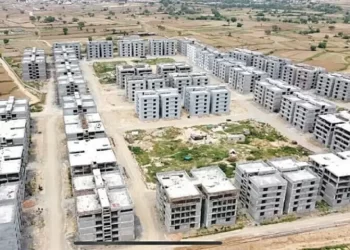Our experts choose the best products and services to help make smart decisions with your money (here’s how). In some cases, we receive a commission from our partners; however, our opinions are our own. Terms apply to offers listed on this page.
- Juneteenth became an official federal holiday two years ago, but it was an unofficial holiday for many Black people before then.
- Now, descendants of enslaved people seek reparations — something that isn’t new to the US.
- Some areas of the US have already taken steps toward reparations.
People use the phrase “We are a nation of immigrants” to describe the United States. That is not the whole truth. We should say, “We are a nation of Indigenous peoples, enslaved peoples, and immigrants.”
Juneteenth has been an unofficial Independence Day for many Black people since June 19, 1865, when a Union General was sent to Texas to enforce the Emancipation Proclamation President Lincoln had signed 2½ years prior, and white Texans had ignored. Since President Biden signed the Juneteenth National Independence Day Act into law two years ago, Juneteenth is now a federally recognized holiday.
When the colonists arrived Plymouth Rock, the Wampanoag had been here for centuries; it is their generosity that saved the Pilgrims from starvation and death. Today, land acknowledgement statements are read at civic events to recognize Native peoples. And more than a dozen states have reclaimed the second Monday in October as Indigenous Peoples Day.
In lieu of land acknowledgement statements, descendants of slaves seek reparations.
The call for reparations by injured ethnic groups is not new in America. For Japanese Americans interned in camps during World War II, the call has been answered. Section 105 of the Civil Liberties Act of 1988, acknowledged, apologized, and made restitution for the fundamental injustices of the evacuation, relocation, and internment of Japanese Americans. The Act also established an Office of Redress responsible for authorizing tax-free restitution payments of $20,000 to eligible individuals of Japanese ancestry. Redress was paid to more than 80,000 claimants and totaled more than $1.6 billion.
Today, in a few municipalities, descendants of slaves are also receiving restitution.
In some parts of the US, reparations have begun
In 1912, Charles and Willa Bruce built a lodge and dance hall on Manhattan Beach. They and their customers were harassed by Klansmen, and in 1923, the buildings were destroyed in an arson fire and the land seized by the town by using eminent domain. Nearly a hundred years later, in October 2021, California Governor Gavin Newsom signed into law legislation to return two parcels of land on Manhattan Beach back to the descendants of the Bruce family. The Bruce family sold the property back to the town for $20 million.
In May 2023, a reparations task force in California composed of nine members approved how the state would apologize and provide cash compensation to Black Californians harmed and discriminated against. Actual amounts and timelines for action weren’t provided. The taskforce is scheduled to present that information no later than July 1, 2023. The loss estimates range from $2,300 per person per year of residence attributed to over-policing of Black communities, to $77,000 total per person for Black-owned businesses’ losses and devaluations over the years.
Consider the example of Evanston
In Evanston, Illinois, the reparations program focused its plan on housing redress due to the redlining and covenants. Since homeownership is the primary way to build wealth in America, generations of African Americans were denied that opportunity. Furthermore, since they were forced to rent, their landlords had no competition and were able to disinvest in their property’s upkeep, becoming slumlords.
Redlining refers to the practice banks and other lenders used to determine financial risk; red lines on town and city maps were drawn according to how many Black people lived there. Covenants were more direct; they pointedly restricted the property owner to not “convey, lease, or (have) occupy” anyone who wasn’t Caucasian and Christian. Evanston chose its reparations program to focus on housing because “there is sufficient evidence showing the City’s part in housing discrimination as a result of early City zoning ordinances in place between 1919 and 1969.”
Where will Evanston find the money to implement this reparative housing plan? 3% of the income generated from the town’s cannabis sales will be directed to this program. It is estimated that within 10 years, the fund for reparations in Evanston will reach $10 million.
The town council of Amherst, Massachusetts, is also using revenue from cannabis licenses to create a reparations bank. They are expected to accrue $2 million in 10 years.
Evanston and Amherst are college towns. Colleges and universities are joining the call to research and then acknowledge their manifold profits from the business of slavery. They include members of the Ivy League: Brown, Columbia, Princeton, and Harvard. Some schools, such as Georgetown, have gone further than acknowledgement by renaming buildings that glorify slave owners and offering full scholarships to descendants of enslaved peoples.
The Juneteenth National Independence Day Act is but another step towards inclusion of all peoples who made America: “We are a nation of Native peoples, enslaved peoples, and immigrants.” Soon, this will be the phrase that accurately describes our country.









